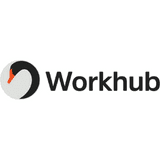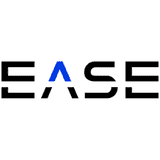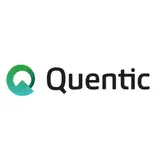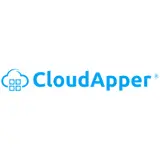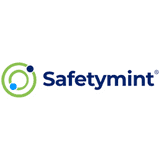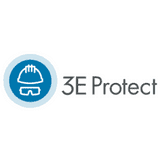- Free Version: Available for teams of up to 10
- Pricing: Premium plan $24/month (with free 30-day trial period)
- Platforms supported: Available on mobile app (iOS and Android) or a web-based software
Why use SafetyCulture?
As an EHS software, SafetyCulture helps businesses to decentralize health and safety management to empower employees from all levels to be proactively involved in the EHS program. EHS leaders, managers, and workers can maintain compliance measures by carrying out regular inspections and audits, raising and addressing issues, taking action, and improving workplace communication. This app is best for teams of various sizes across different industries.
Features:
- Download and customize free EHS audit checklists from the Public Library
- Capture issues and assign necessary actions to the right personnel
- Improve EHS regulatory implementation by letting team members receive critical messages and alerts on time mainly via the Heads Up feature
- Build your EHS operations program by integrating your tools such as Tableau, Okta, and Sharepoint to SafetyCulture
- Create and implement engaging worker Training sessions EHS policies and overall procedures to stay ahead of industry best practices
Why use Workhub?
As a comprehensive yet affordable EHS software solution, Workhub by SafetySync makes it manageable for organizations to sort, comply with, and implement employee training, Standard Operating Procedure (SOP), EHS policies, and regulatory inspections.
Features:
- Upload and organize safety policies to easily track changes, versions, acknowledgments, and compliance
- Build EHS program workflows, such as assigning team members to view and acknowledge procedures
- Log workplace EHS incidents to generate relevant statistics on trends and risk level
- Free Version: Available
- Pricing: $3 per user per month/minimum of 3 users (with a 14-day free trial)
- Platforms supported: Web
Why use EASE?
With the platform’s support for layered process audits to safety inspections, EASE empowers organizations to realize the value of quality operations driven by worker safety and effective management solutions.
Features:
- Schedule thorough audits, set frequencies, and automate reminders as appropriate to ensure that everyone involved in the EHS program is notified and well-informed about processes
- Customize question types for various audit solutions to aid auditors in conducting EHS inspections
- Streamline document management and recordkeeping by tracking document status and access, using custom tags, and building approval workflows
- Free Version: Available
- Pricing: Contact for pricing details or request for a demo (with a 30-day free trial)
- Platforms supported: Web, iOS, and Android
Why use Quentic?
Enabled as a standardized software system, Quentic aims to provide users with maximum security and flexibility in managing their EHS compliance measures. This EHS audit software is also optimized for mobile use, making incident reporting and auditing convenient using smartphones.
Features:
- Streamline reporting tasks by accessing comprehensive insights for evaluation, allowing for efficient system creation across the organization
- Conduct risk assessments easily by having a standard structure of recordkeeping from equipment maintenance to hazard identification
- Share EHS compliance documents to keep workers informed in just a few clicks
- Free Version: Available
- Pricing: Contact for pricing details or request a demo (with a 14-day free demo version)
- Platforms supported: Web, iOS, and Android
Why use CloudApper?
With this EHS software’s intuitive solution, CloudApper is the go-to choice for preventing workplace compliance issues, streamlining admin work, and monitoring EHS management policies in place. Maintain simple OSHA recordkeeping systems and incident management using CloudApper’s fully customizable app.
Features:
- Record, manage, and address incidents on the go for real-time insights and proactive reporting
- Maintain a knowledge base to keep teams and workers across the organization updated on industry standards on EHS
- Create training courses for your workers and monitor training schedules in one secure cloud storage
- Free Version: Not available
- Pricing: Contact for pricing details (with free trial)
- Platforms supported: Web, iOS, and Android
Why use Safetymint?
As an EHS audit management software, Safetymint by Niyati Technologies helps progressive organizations keep up with today’s ever-critical safety measures by replacing conventional pen-and-paper methods with a highly collaborative digital solution.
Features:
- Get access to pre-built templates you can easily customize for various types of tasks and EHS audit management
- See the complete picture of your organization’s EHS process performance using the software’s intuitive dashboards
- Download data-rich reports as spreadsheets to improve operational efficiency
- Free Version: Not available
- Pricing: Starts at $3600 per year (with a 14-day free trial)
- Platforms supported: Web, iOS, and Android
Why use Capptions?
Commonly used as an audit, inspection, and EHS management software, Capptions promotes worker empowerment by helping organizations allow their employees to conduct observations, complete inspections, and address issues through corrective actions.
Features:
- Conduct mobile inspections, collect EHS data, and notify management
- Monitor, share, and document unsafe situations, operational issues, and EHS processes using the Observations feature
- Track custom insights, analyze trends using charts, and export analytics into comprehensive PDF reports
- Free Version: Available (2 users)
- Pricing: Starts at €18 per user per month, billed annually
- Platforms supported: Web, iOS, and Android
Why use 3E Protect?
Use 3E Protect by Verisk 3E to help improve your organization’s compliance with EHS regulations. Formerly known as 3E Online SDS, this digital solution offers efficient SDS management through an intuitive interface and other compelling capabilities.
Features:
- Inform employees and customers about EHS hazards and measures to ensure safe processes
- Automate the process of obtaining documents and indexing data
- Maximize end-to-end SDS management to match your product list to the most current SDSs and access up-to-date site-specific chemical inventory information
- Free Version: Not available
- Pricing: Contact for pricing details (with a 14-day free trial)
- Platforms supported: Web, iOS, and Android
Why use CORE EHS?
As a multifeatured service, CORE EHS has thousands of active users from industrial workplaces maximizing the platform’s digital EHS solutions. To suit unique business needs, the platform also has configuration capabilities toward streamlined task automation and safety process implementation.
Features:
- Access real-time EHS data analytics and promote proactive safety among workers
- Configure user hierarchy based on your organization’s structure
- Integrate existing Enterprise Resource Planning (ERP) systems that your organization uses (like SAP)
- Free Version: Not available
- Pricing: Contact for pricing details
- Platforms supported: Web
What is EHS Software?
An environment, health, and safety (EHS) software is a tech solution that enables organizations to protect the health and safety of workers through an automated system. Also called an EHS management software, it also helps simplify regulatory compliance by efficiently managing internal audits, inspections, reporting, and documentation.
Benefits
Below are a few ways an EHS software can help organizations prevent untoward incidents and promote a healthier and safer environment.
Encourage a proactive safety culture
Mobile devices, combined with a dynamic EHS software, encourage workers to report hazards, even when they are busy at work. By enabling everyone in the workplace to quickly identify and act on critical hazards without sacrificing much of their time and effort, they are empowered to take part in building a safety culture that focuses on implementing proactive measures—not one that waits until a safety incident or accident occurs.
Ensure confidence through compliance
Occupational health and safety management standards (such as ISO 45001) and OSHA laws and regulations help provide a structure to the maintenance of safe and healthy workplaces. Companies who aim to be certified for occupational safety standards can utilize an EHS compliance software to help demonstrate their organization’s compliance.
Standardize internal EHS audits
With a digital solution like a cloud-based EHS software, companies can easily build and update digital checklists and easily share them with everyone in the organization—all within a few taps.
Key Features
Consider these top EHS software features to help you decide which to use for your organization.
- Smart form – Enable your organization to easily adapt through intelligent features such as creating smart forms tailored to suit the dynamics of your operations.
- Inspections and audits – An EHS software must enable your teams and EHS leaders to complete inspections from anywhere at any time as needed.
- Fast reporting – Being informed about the current issues and gaps present in your current systems allows for quality operations, change management, and protocol implementation.
- Insights and analytics – All your safety information must be in one place–providing you with actionable insights in just a glance.
- Integrations and workflow automation – For a holistic management program, your EHS software must have the option to connect to other business software systems such as Tableau, Sharepoint, and more.
How to Pick the Best EHS Software
Aside from the features emphasized above, here are 3 other major things to consider when deciding which EHS software to use.
Cost
Some sample questions to ask for this factor include the following:
- Will the EHS software pricing justify the value it will provide to the organization?
- Are there existing subscription options for those who would like to weigh their choices?
- Are the subscription plans customizable according to the organization’s specific needs and size?
Support
Based on your organization’s needs, check if the EHS software provider is easy to get in touch with for possible deployment concerns and other processes, such as tool integration.
Employee training
Keeping employees well-informed and equipped with ample knowledge on industry best practices—zooming in on EHS compliance regulations—is paramount to ensure safe practices in the workplace. Your EHS software must be able to integrate tools and functions that educate workers toward promoting a proactive safety culture.
Customer Success
Learn about these industry leaders’ EHS success stories as they utilize SafetyCulture:
Check out SafetyCulture’s ready-to-use EHS checklists below:

